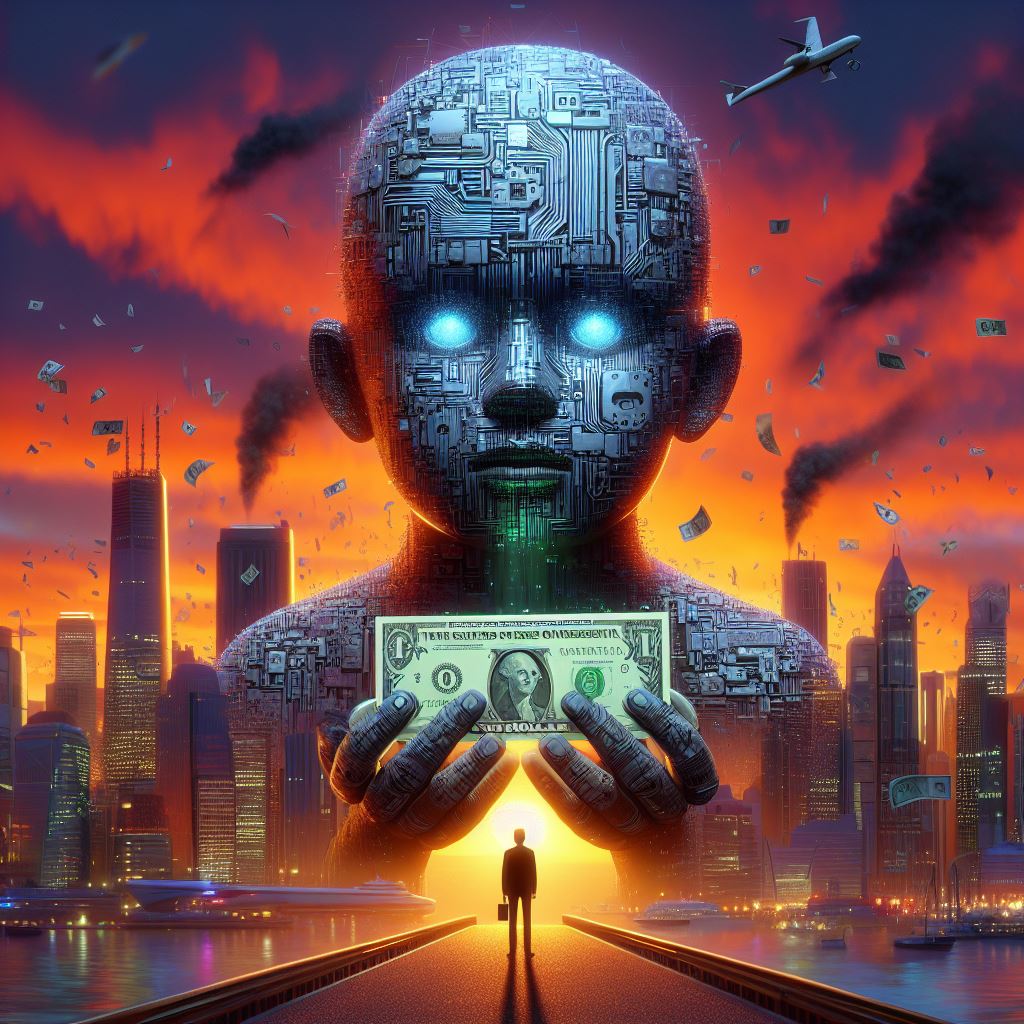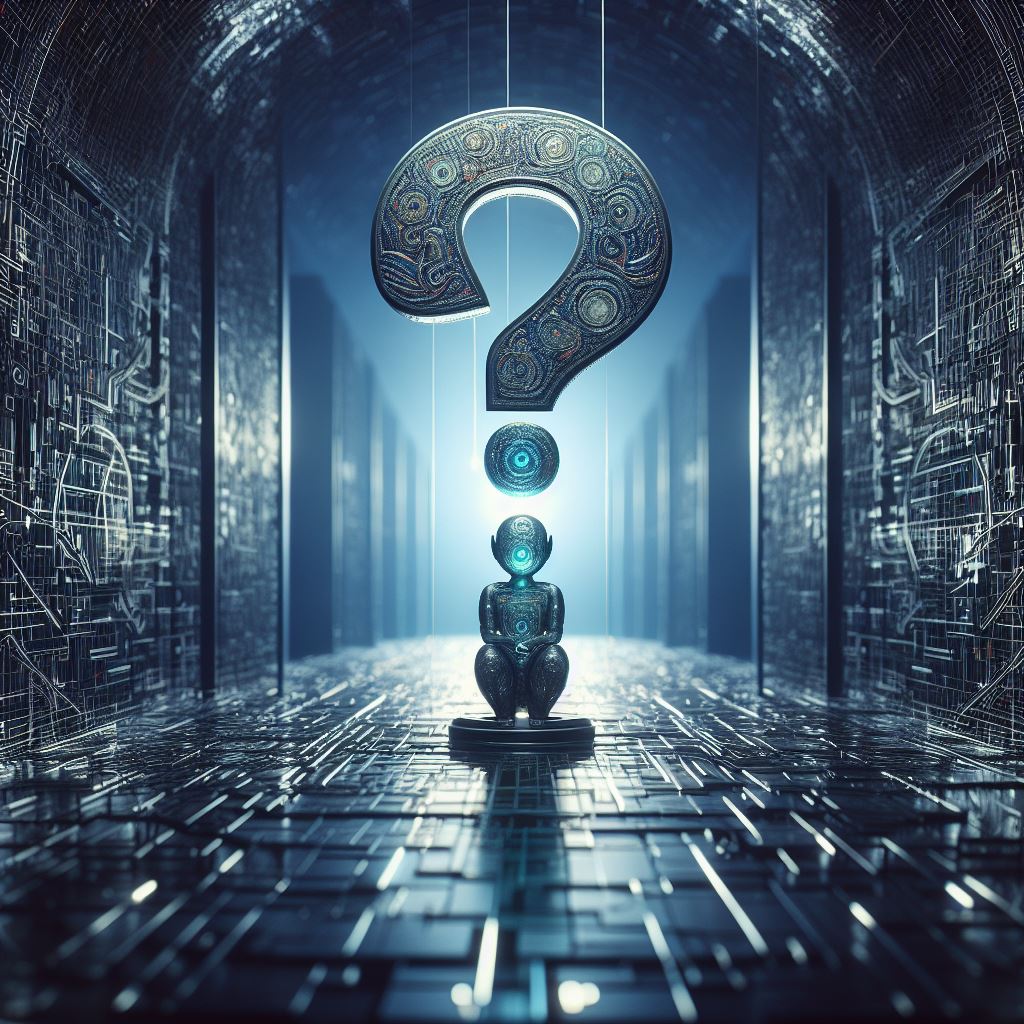ChatGPT isn’t merely another language model; it represents a significant leap in natural language processing. Let’s delve into its fascinating history, explore the technology behind it, and discuss its impact on society.
What Is ChatGPT?
ChatGPT is an advanced AI chatbot capable of generating human-like text and executing tasks based on written commands. It stands at the intersection of narrow artificial intelligence (ANI) and the dream of artificial general intelligence (AGI). The “GPT” in ChatGPT refers to “generative pre-trained transformer,” a large language model that employs deep learning to produce remarkably human-like speech. In essence, ChatGPT is powered by the GPT model, which also drives other products like OpenAI’s Codex and Copy.ai.
The key aspects of ChatGPT:
- Generative Pre-trained Transformer (GPT):
- ChatGPT is built upon the GPT architecture, which utilizes a transformer-based neural network. Transformers excel at capturing long-range dependencies in text, making them ideal for language modeling.
- The “pre-trained” aspect refers to the model being initially trained on a massive corpus of text data. This pre-training allows it to learn grammar, context, and world knowledge.
- Fine-Tuning for Specific Tasks:
- After pre-training, ChatGPT undergoes fine-tuning on specific tasks. For example:
- Conversational AI: ChatGPT is fine-tuned to engage in natural conversations with users.
- Text Generation: It can compose essays, stories, and creative content.
- Code Completion: ChatGPT assists programmers by suggesting code snippets.
- Language Translation: It can translate text between languages.
- After pre-training, ChatGPT undergoes fine-tuning on specific tasks. For example:
- Contextual Understanding:
- ChatGPT excels at understanding context. It considers not only the current input but also the preceding context, allowing it to generate coherent and contextually relevant responses.
- This contextual awareness enables it to maintain conversational flow and answer questions accurately.
- Creative and Imaginative:
- ChatGPT can generate poems, stories, and even fictional dialogues.
- Limitations and Challenges:
- While impressive, ChatGPT is not flawless. It occasionally produces incorrect or nonsensical answers.
- It may exhibit biases present in its training data, highlighting the need for ongoing improvements.
- Human-AI Interaction:
- ChatGPT bridges the gap between humans and machines. It assists users, provides information, and sparks creative exchanges.
- Its conversational abilities make it a valuable tool for customer support, virtual assistants, and more.
- Ethical Considerations:
- As with any AI, ethical concerns arise. Ensuring fairness, transparency, and responsible use is crucial.
- OpenAI actively seeks user feedback to enhance ChatGPT’s behavior and mitigate biases.
The Technology Behind ChatGPT
Large language models (LLMs) are neural networks trained on massive datasets, enabling them to understand and generate human-like speech. Unlike discriminative AI, which classifies data, generative AI models—like LLMs—are explicitly designed to produce output. Early LLMs relied on recurrent neural networks (RNNs), but their memory limitations hindered their performance. Long short-term memory (LSTM) networks improved memory retention but still fell short.
In 2017, Google introduced the transformer architecture, revolutionizing LLMs. This architecture uses attention mechanisms to track word positions, order, and hierarchy, allowing it to retain extensive contextual information. OpenAI’s generative pre-trained transformer (GPT) and Google’s Bidirectional Encoder Representations from Transformer (BERT) models are both based on this transformative architecture.
The History of ChatGPT
ChatGPT’s journey began with OpenAI’s research on generative models in 2016. Since then, it has undergone several iterations, each enhancing its capabilities. ChatGPT’s evolution reflects the broader advancements in AI and natural language understanding.
- Birth of Generative Models (2016-2017):
- ChatGPT’s roots trace back to 2016 when researchers at OpenAI began experimenting with generative models. These early models aimed to generate coherent text but were often plagued by issues like lack of context and coherence.
- In 2017, the introduction of the transformer architecture by Google revolutionized language models. Transformers allowed for better context understanding, enabling more accurate and context-aware responses.
- GPT-1: The Pioneer (2018):
- In 2018, OpenAI released GPT-1 (Generative Pre-trained Transformer 1). It was a significant leap forward, with 117 million parameters.
- GPT-1 demonstrated impressive capabilities in natural language understanding and generation. However, it still suffered from occasional nonsensical outputs and lacked fine-tuning for specific tasks.
- GPT-2: Scaling Up (2019):
- GPT-2, released in 2019, was a game-changer. With a whopping 1.5 billion parameters, it outperformed its predecessor.
- GPT-2 could generate coherent paragraphs, compose poetry, and even mimic specific writing styles. Its large size allowed it to capture intricate nuances in language.
- Ethical Concerns and Controlled Release (2019-2020):
- GPT-2’s capabilities raised ethical concerns. OpenAI initially hesitated to release it due to fears of misuse (e.g., generating fake news or malicious content).
- Eventually, OpenAI opted for a controlled release, sharing GPT-2’s smaller versions with the research community and gradually increasing its size.
- Fine-Tuning and Specialized Models (2020-2021):
- Researchers fine-tuned GPT-2 for specific tasks, creating specialized models. For instance:
- ChatGPT: Tuned for conversational interactions.
- TextGPT: Focused on long-form text generation.
- CodeGPT: Tailored for programming-related tasks.
- These specialized models improved performance in their respective domains.
- Researchers fine-tuned GPT-2 for specific tasks, creating specialized models. For instance:
- GPT-3: The Quantum Leap (2020):
- GPT-3, with an astonishing 175 billion parameters, marked a quantum leap. It could generate coherent essays, translate languages, and even perform arithmetic.
- Its zero-shot and few-shot learning capabilities amazed the AI community. GPT-3 became the talk of the town, demonstrating AGI-like abilities.
- ChatGPT’s Iterations (2021-2023):
- ChatGPT, based on GPT-3, underwent several iterations:
- ChatGPT Plus: Introduced in 2021, it offered a subscription-based service with enhanced features.
- ChatGPT API: OpenAI made ChatGPT accessible via an API, allowing developers to integrate it into their applications.
- Fine-Tuning and Feedback: Continuous fine-tuning based on user feedback improved its responses.
- ChatGPT, based on GPT-3, underwent several iterations:
- The Future (Beyond 2023):
- ChatGPT’s journey continues. Researchers strive to address biases, improve context understanding, and enhance its conversational abilities.
- As we look ahead, ChatGPT’s impact on communication, creativity, and productivity remains profound.
Impact and Implications
ChatGPT’s success lies in its ability to engage users, assist with tasks, and provide valuable information. However, it also raises ethical concerns, such as biases and misuse. As ChatGPT continues to evolve, striking a balance between utility and responsibility becomes crucial.
ChatGPT, developed by OpenAI, has gained significant popularity and adoption in various commercial contexts. Here are the key steps and applications:
- Content Creation:
- ChatGPT is a powerful tool for generating high-quality content. It can create product descriptions, blog posts, social media content, and even entire articles.
- Businesses leverage ChatGPT to streamline their marketing efforts and enhance content creation productivity1.
- Translation Services:
- ChatGPT can automatically translate text from one language to another. It’s a valuable resource for businesses operating globally.
- Conversational AI:
- ChatGPT serves as the foundation for intelligent chatbots. These chatbots engage with users in natural language, providing human-like responses.
- Applications include customer service, sales, and personalized virtual assistants1.
- Knowledge Discovery:
- By feeding relevant information to ChatGPT from internal databases, businesses can enable it to provide insights and answers based on company-specific data.
- Employees benefit from natural language access to business information1.
- Coding Applications:
- ChatGPT can write code for simple or repetitive tasks, such as file I/O operations, data manipulation, and database queries.
- While its coding abilities are limited, it can assist programmers in certain scenarios1.
- Debugging:
- ChatGPT’s bug-fixing capabilities are valuable for identifying and resolving code issues.
- Developers can use it to improve code quality and efficiency1.
- Marketing and SEO:
- ChatGPT streamlines marketing efforts by generating engaging content for websites, blogs, and social media platforms.
- It assists in content marketing strategies and creative brainstorming2.
- Customer Service Automation:
- ChatGPT powers chatbots that handle customer inquiries, resolve issues, and provide personalized responses.
- It enhances customer satisfaction and frees up human resources1.
- Data Collection and Analysis:
- ChatGPT can analyze unstructured data, such as social media posts and customer feedback, to identify patterns and trends.
- Businesses gain insights for decision-making and strategy formulation3.
- Educational Applications:
- ChatGPT aids personalized learning and language tutoring. It can explain concepts, answer questions, and assist students2.
- Marketing Content Generation:
- ChatGPT accelerates content creation for marketing campaigns, product launches, and brand communication.
- It helps maintain consistency and relevance across various channels4.
In summary, ChatGPT’s commercial journey involves leveraging its capabilities for diverse tasks, from content creation to customer service automation. Its impact spans across industries, making it a valuable asset for businesses worldwide.
ChatGPT: From History to Future
The future of ChatGPT holds promise. As researchers refine its architecture, address limitations, and fine-tune its responses, we can expect even more impressive applications. Whether it’s aiding professionals, enhancing customer service, or sparking creative conversations, ChatGPT’s journey is far from over.
In summary, ChatGPT’s evolution exemplifies the power of AI, bridging the gap between human and machine communication. As we move forward, let’s embrace its potential while remaining vigilant about its impact on our world.



